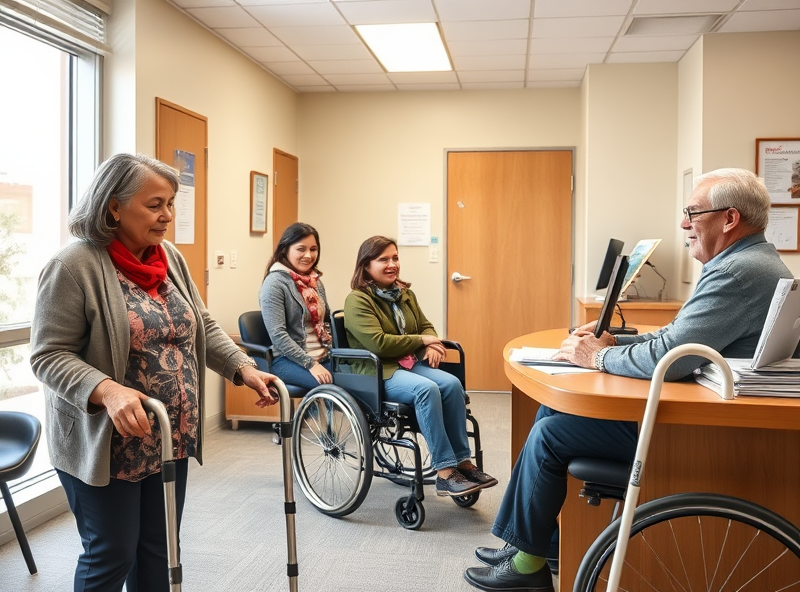
Who Qualifies for US Government Benefits in 2025?
Understanding SSI: Benefits for Low-Income Seniors and Individuals with Disabilities

Supplemental Security Income (SSI) is a federal program in the United States designed to help individuals who have limited income and resources. In 2025, SSI continues to be a vital support system for low-income seniors aged 65 and older, as well as individuals of any age who are blind or have qualifying disabilities.
To qualify for SSI, applicants must meet strict income and asset limits. As of 2025, individuals must have less than $2,000 in countable resources ($3,000 for couples). These resources include cash, bank accounts, and other assets, but exclude primary residences and one vehicle. Income limits vary depending on the type and source of income, but generally, the less income you have, the higher your SSI benefit may be.
SSI benefits provide monthly cash assistance to help cover basic needs such as food, clothing, and shelter. In 2025, the federal base rate is $943 per month for individuals and $1,415 for couples, though some states add a supplemental payment. Importantly, SSI recipients automatically qualify for Medicaid in most states, offering crucial access to healthcare services.
For individuals with disabilities, SSI also requires proof of a qualifying medical condition that significantly limits daily functioning. The Social Security Administration (SSA) uses a detailed evaluation process, including medical records and sometimes consultative exams, to determine eligibility.
If you or a loved one may qualify, it’s helpful to apply as early as possible, as the process can take time. You can start your application online or by contacting your local Social Security office. For more information, visit the official SSA website: https://www.ssa.gov/ssi/
Understanding SSI can empower individuals and families to access the support they need for a more stable and secure life.
Exploring SSDI: How Disability Insurance Supports Unemployed Workers

Social Security Disability Insurance (SSDI) is a vital lifeline for individuals who are unable to work due to a qualifying disability. In 2025, SSDI continues to provide essential financial support to millions of Americans who meet strict eligibility criteria. Understanding how SSDI works can help you or a loved one navigate the system more effectively and access the benefits you deserve.
To qualify for SSDI, you must have a medical condition that meets the Social Security Administration’s (SSA) definition of disability. This means the condition must be severe enough to prevent you from engaging in substantial gainful activity (SGA) and is expected to last at least one year or result in death. Additionally, you must have earned enough work credits through previous employment. Generally, you need 40 credits, 20 of which were earned in the last 10 years before becoming disabled. Younger workers may qualify with fewer credits.
SSDI is not a needs-based program, so your income or assets do not affect your eligibility. However, you must have paid into the Social Security system through payroll taxes. Once approved, SSDI recipients may also become eligible for Medicare coverage after a 24-month waiting period.
One of the key benefits of SSDI is that it offers a stable source of income for those who can no longer work, helping them cover basic living expenses. It also provides access to vocational rehabilitation programs and return-to-work incentives, such as the Ticket to Work program, which supports beneficiaries who want to re-enter the workforce without immediately losing their benefits.
If you believe you may qualify for SSDI, it’s important to apply as soon as possible, as the process can take several months. You can start your application online through the official SSA website: https://www.ssa.gov/benefits/disability/
By understanding the SSDI program, you can make informed decisions about your financial future and access the support you need during a challenging time.
Social Security Retirement: What You Need to Qualify in 2025

To qualify for Social Security retirement benefits in 2025, you’ll need to meet specific work and age requirements set by the Social Security Administration (SSA). These benefits are designed to provide financial support during your retirement years, and understanding the eligibility criteria can help you plan better for the future.
First, you must earn at least 40 work credits over your lifetime. In 2025, you earn one credit for every $1,730 in wages or self-employment income, up to a maximum of four credits per year. That means most people need about 10 years of work to qualify.
Second, your age matters. While you can start receiving benefits as early as age 62, your full retirement age (FRA) depends on your birth year. For example, if you were born in 1960 or later, your FRA is 67. Claiming benefits before your FRA will reduce your monthly payments, while delaying benefits up to age 70 can increase them.
It’s also important to note that your benefit amount is based on your highest 35 years of earnings. If you worked fewer than 35 years, zeros are averaged in, which can lower your benefit. So continuing to work or replacing lower-earning years with higher ones can boost your retirement income.
Lastly, even if you never worked, you may still qualify for spousal or survivor benefits based on your spouse’s work record.
For more detailed information, you can visit the official Social Security Administration website: https://www.ssa.gov/retire/
Affordable Housing Assistance: Programs for Low-Income Citizens and Residents

Finding safe and affordable housing can be a challenge for many low-income individuals and families in the U.S. Fortunately, several government programs are designed to help ease this burden and provide stable living conditions.
One of the most well-known programs is the Housing Choice Voucher Program, commonly referred to as Section 8. Managed by the U.S. Department of Housing and Urban Development (HUD), this program helps eligible low-income families, the elderly, and people with disabilities afford decent, safe, and sanitary housing in the private market. Participants are free to choose any housing that meets the program requirements, and a portion of the rent is subsidized by the government.
Another important initiative is Public Housing, which provides government-owned rental units to low-income families. These units are managed by local Public Housing Agencies (PHAs) and are typically offered at reduced rates based on the tenant’s income.
For those facing homelessness or at risk of becoming homeless, the Continuum of Care (CoC) Program offers funding to nonprofit providers and state and local governments to quickly rehouse individuals and families while minimizing the trauma and dislocation caused by homelessness.
Additionally, the Low-Income Housing Tax Credit (LIHTC) program encourages private developers to build affordable rental housing by offering tax incentives. This increases the availability of affordable units across the country.
To check eligibility and apply for these programs, individuals can visit the official HUD website or contact their local housing authority. It’s important to note that demand often exceeds supply, so waitlists are common.
For more information, visit the official HUD page: https://www.hud.gov/topics/rental_assistance







